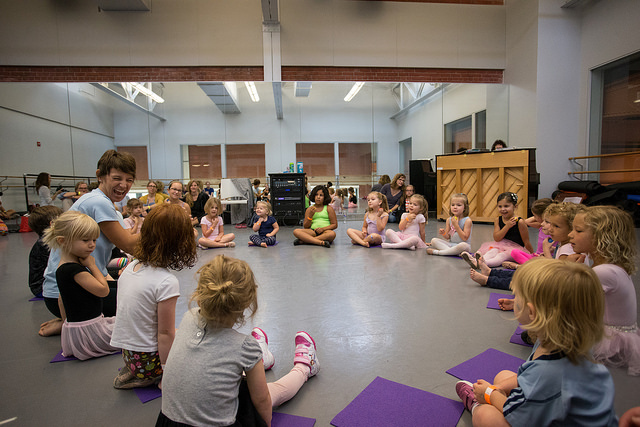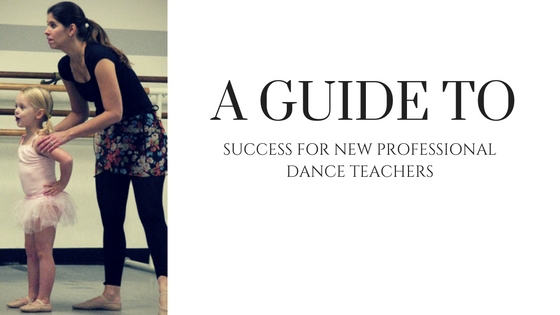Congratulations, you’re finally in the studio with your first dance class or classes. If you’re wondering, “now what?,” these tips are here to help you.
How to not to be nervous in class
It is normal to be nervous teaching a dance class as a new instructor. Here’s something to keep in mind: many of your students will likely be nervous as well. You can help calm things by being prepared. If you are disorganized and unsure of yourself, this will come across to students no matter what age students you teach. “Fake it ’til you make it” has proven true when it comes to confidence.
Take steps to understand everything forwards and backwards, but don’t be a perfectionist. Students will build rapport with teachers they can relate to. With this approach, you’ll be ready for any question that comes, and will feel more comfortable when a road bump presents itself.
Finally, start out with easy dances to teach a class. Get those early successes under your belt, and you’ll feel confident to tackle dance moves that are harder to grasp.
Being prepared
What does it mean to know everything forwards and backwards? Start with your surroundings. If the studio is not your own and you’ve been hired to teach, be sure you know the:
- names of essential staff
- address
- phone number
- website
- locker room logistics
- hours of operation
- how and when of student payments
You never want to fumble with the fundamentals. Remember, if you recognize that you might not be able to answer certain questions, have the name of a specific staff member who will instead be able to help. Providing a solution to a problem shows you’re prepared and confident.
Know your music. Playing it in the dance studio should never be the first time you are hearing it. Be sure you have listened to the music over and over. Learn how the sound system in the studio works, even if it’s a simple CD player. Set your choreography to each tune and practice, practice, practice. When you are comfortable with each step, you will be able to make all your students comfortable.
Starting slowly
Even if you are teaching more advanced students who may pick up skills quickly, remember they have not been taught by you before. Students need time to familiarize themselves with your methods, style and pace.
Don’t rush a routine. Doing so may confuse dancers. Begin with dances that require copying or following. Get the basic moves down, take it slow and make sure all dancers understand. As you move through the routines, pay attention to the attitudes and energy of the dancers. You will see whether they are intimidated, captivated or engaged. React accordingly by continuing to go slowly or increasing the pace. You will be able to see how much of a challenge students can handle if you pay attention.
If you discover that you need to address different levels within one class, engage the more skilled dancers in helping you help the less skilled dancers. Pair them up. This keeps the more skilled dancers engaged in the skill, and motivated to continue to improve. For the less skilled dancers, this gives them an opportunity to build rapport with the class as a community, and also hear instruction that may resonate for them that you didn’t happen to articulate.
Understand dance teaching methods per learning styles
Whether you’ve got a studio full of pre-teen dancers or older adults, every student learns differently. You will see a variety of learning styles. To be effective, you will need to adjust your dance teaching methods for these styles. Some dancers learn visually, while others are aural or kinesthetic learners. For example, a visual learner will need to see the steps they are meant to perform. This will require you to demonstrate or provide diagrams. On the other hand, an aural learner will need you to describe steps and routines. Kinesthetic learners won’t want a lot of instructions and will tire of your talking; they need to get moving because they pick things up by doing instead of being told.
Going easy
When you first start out, expect some level of chaos. The class needs time to get into the groove and feel comfortable  with themselves, each other, and you. Remember you are new to this, and be easy on yourself. Mistakes will sometimes happen. Students have their own insecurities in their head, too. They don’t want to fail or look foolish. Be there to keep them calm as you provide instruction. It helps if you do not take things too seriously, learn from mistakes, and improve for the next class.
with themselves, each other, and you. Remember you are new to this, and be easy on yourself. Mistakes will sometimes happen. Students have their own insecurities in their head, too. They don’t want to fail or look foolish. Be there to keep them calm as you provide instruction. It helps if you do not take things too seriously, learn from mistakes, and improve for the next class.
Smile, have an easy-going attitude and remain positive. If you are able to have fun, this will spill over to the students. They will be able to enjoy an instructor who not only knows what he or she is doing, but loves doing it. Don’t take everything so seriously. Precision will come in time.
For even greater aspirations, check out Five Qualities of Extraordinary Dance Teachers.
Photo credits:
Ballet Lessons by terren in Virginia
BDPX9563 by KCBalletMedia

